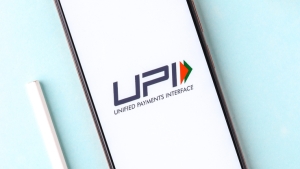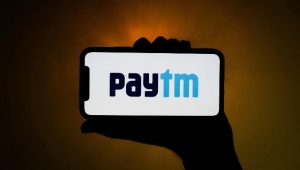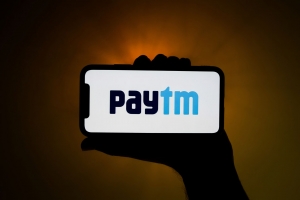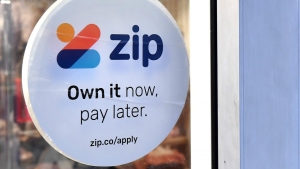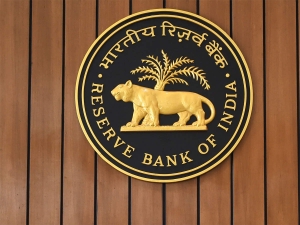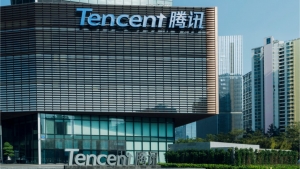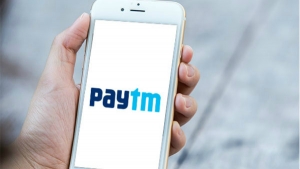In the days before China’s tech crackdown humbled the country’s largest platform companies, Ant Group seemed intent on building its own cross-border payments ecosystem in Southeast Asia. The idea, though never explicitly stated, was to build a regional payments rail that could replicate at least some of the success of Alipay’s dominant domestic system.
U.S. payments giant Stripe has had its eye on the Asia-Pacific region for a long time, both mature markets like Japan and Australia, and emerging economies in Southeast Asia. It sees enormous potential in the region, despite the intense competition in the payments segments there. However, the global tech slump may force the company to slow the speed of its expansion as it works to cut costs. Earlier this year, Stripe’s US$95 billion valuation reportedly fell 28% after an internal recalculation. Then came the layoffs.
There is a lot of speculation right now about whether India will make good on its promise to cap third-party payment providers’ market share on the United Payments Interface (UPI) at 30%. We argued when the idea was first proposed several years ago that it did not make a lot of sense and would be hard to implement. Now, with December 2022 deadline looming, the National Payments Corporation of India (NPCI), which operates UPI, and the Reserve Bank of India (RBI) are considering extending the deadline.
BNPL, or buy now pay later, is a type of payment option that allows customers to purchase items now and pay for them later in installments. This type of payment option has been gaining popularity in recent years, especially among younger shoppers. In fact, a recent study showed that BNPL usage has increased by 400% among millennials in the past two years.
BNPL first emerged in Asia in 2014 and has since become extremely popular in countries like China, South Korea, and Singapore. In China, for example, the BNPL market is expected to grow from $30 billion in 2020 to $750 billion by 2025. It could be argued that Australia was the epicentre of BNPL in Asia with such previous market leaders including Afterpay and Zip. So, what is driving this massive growth? Let's take a closer look at BNPL in Asia and how it works.
Paytm’s path to profitability has always been a bit convoluted given the company’s labyrinthine business lines and its determination to compete in so many retail segments that require regular subsidizing of customers. That said, it enjoys a scale that few – if any – of its competitors can boast, the backing of some very deep-pocketed investors and the ability to raise cash cheaply on India’s stock exchange.
A commentary in collaboration with Banking Circle.
Cross-border payments are increasingly characterized by a dynamic and challenging market environment. On the one hand, the market is booming and expected to reach US$156 trillion this year. On the other, traditional international correspondent banking networks are shrinking at the same time that alternative rails that execute payments in real time are increasingly common. Thus, financial institutions (FIs) have more choice than ever, but being able to connect seamlessly to all the rails is not straightforward.
Razorpay is the rare fintech unicorn with discipline and focus, as well as a sky-high valuation. Last valued at US$7.5 billion in December 2021, the Bengaluru-based payments gateway is notable for growing through strategic acquisitions and sticking to its B2B focus despite pressure to foray into retail. It is now poised to expand beyond its home market into Southeast Asia.
China’s largest ever tech crackdown has failed to dethrone Alipay and WeChat Pay from their dominance of the country’s fintech sector, even if it has reduced their profitability. For better or worse, the duopoly seems to have staying power, especially in payments, the stickiness of the respective super apps evident. However, there has long been a line of thinking that payments interoperability and the digital renminbi together will pose a threat to the duopoly. Following recent comments by a senior People’s Bank of China (PBoC) official about the need to standardize QR codes, there is renewed speculation that the payments hegemony of China’s fintech juggernauts could be waning.
A commentary in collaboration with Banking Circle.
Cross-border payments in Asia Pacific have made significant strides in recent years, buoyed by strong economic growth and steady digitization of financial services. Estimated by McKinsey & Co. to have grown at 6% annually from 2011-2019, the region’s cross-border payments account for an increasingly large share of a global market expected to reach US$156 trillion globally this year.
Singapore-based B2B payments firm Thunes is stepping up its global expansion. Following its securing of a major payment institution license in France in late 2021, Thunes has continued to grow its global footprint. This has included partnering with Alipay, broad expansion in Greater China and establishing operations in Saudi Arabia.
The National Payment Corporation of India’s (NPCI) United Payment Interface (UPI) payment rail is the most successful initiative of its kind globally, proof that government-led digital financial inclusion efforts can bear fruit when they are implemented well. In the second quarter of the year, UPI recorded over 17.4 billion transactions in volume and Rs 30.4 trillion in terms of value, up 118% and 98% respectively over the same period a year ago. While India remains UPI’s paramount market for now, the company is increasingly targeting global expansion.
Southeast Asian countries have for several years been interested in establishing a regional cross-border payments system. Full payments interoperability could be possible in Southeast Asia as early as November 2022, Fitch Solutions Risk and Industry Research said in a recent research note, citing comments made by Southeast Asian central bankers in July. Yet if we take a closer look, we find that the linkages are predominantly bilateral and there are still some kinks to be ironed out before a truly multilateral system of real-time retail payment rails can be established.
We remember a time, before China’s tech crackdown, when Ant Group seemed keen on building its own cross-border payments ecosystem in Southeast Asia. The Chinese fintech giant’s shopping spree took it to nearly every Asean country, while it has also rolled out wholly-owned digital banks in the Asian financial centers of Hong Kong and Singapore. Then, as now, the question was always how Ant could connect the disparate components of its non-mainland China ecosystem. If it cannot, the whole will never amount to a sum greater than the individual parts.
It has been a long time since we heard anything from Dana, the Indonesian Ant Group-backed e-wallet. In the past few years as many big Asian tech firms have invested in incumbent Indonesian banks, intending to refashion them as digital lenders, standalone e-wallets, lacking banking licenses, have been at a disadvantage. Yet Dana may be able to carve out a niche within the ecosystem of Alibaba and the local conglomerate Sinar Mas following the purchase by Lazada of US$304.5 million worth of its shares from existing shareholder Emtek Group and its receipt of a fresh US$250 million investment from Sinar Mas.
For the past few years, the biggest credit story in India has been buy now, pay later (BNPL). Tremendous demand for credit has driven the BNPL boom in the subcontinent, but tighter regulation and slower growth are both now inevitable. After all, you cannot act as a credit provider without being regulated like one forever. As BNPL slows down in India, there may be an opportunity for the overlooked – but better regulated and steadily growing – credit card segment to build market share.
Can you think of any Western fintech firms that are dominant in Asia Pacific? Somewhat dominant? Neither can we. That may be because the region has no shortage of homegrown fintech options, especially in the ultra-competitive payments segment. That is not deterring Stripe though. As one of the most valuable startups in history, the U.S. payments giant thinks big, and sees significant market opportunities across the APAC region, including through strategic partnerships.
Paytm is in high spirits. Its stock has risen 45% over the past three months, making it an outlier among fintechs. Paytm is even feeling pretty good about losing 6.44 billion rupees (US$81 million) in the first quarter of FY2023, an increase of 70% from a loss of 3.8 billion rupees a year earlier. Paytm attributed the higher loss to increased operating costs and said it is on track to reach operating profitability by the second quarter of the fiscal year.
Looking at the recent earnings statement of Australia’s Zip, we have to give the company credit for being able to put a positive spin on a troubled story. As a buy now, pay later (BNPL) firm that overextended itself, Zip now faces double trouble: a problematic business model and resources that are stretched too thin. But the fourth fiscal quarter earnings statement (April to June) highlights Zip’s revenue rising 27% year-on-year to AU$160.1 million and a 20% increase in transaction volume. Losses, however, represented 2.7% of the value of transactions.
India’s fintech unicorn club has a new member, the credit provider OneCard. In mid-July, OneCard announced it had raised US$100 million in fresh funding at a valuation of US$1.4 billion, nearly double its January valuation of US$750 million. Leading the round was Singapore’s Temasek. Other key participating investors existing backers QED, Sequoia Capital India and Hummingbird Ventures. To date, OneCard has raised US$225 million and says it has over 250,000 customers spending about US$60 million with its cards each month.
India’s UPI real-time payments platform has achieved impressive growth since its inception just over six years ago, with expansion being especially turbo-charged during the long coronavirus pandemic. The acceleration of India’s overall digital economy over the past 2.5 years has helped UPI become the most dominant platform of its kind on the subcontinent and even begin nascent international expansion: to the UAE, Bhutan, Singapore, Nepal and now France. The question now is if UPI can build meaningful market share outside of its home country, where it enjoys some inherent advantages.
What goes up, must come down, especially in fintech. We know that buy now, pay later (BNPL) firms have grown organically at a torrid pace in India due to low credit card penetration and strong demand for credit products, and we also know they could not have grown so fast if they had been properly regulated. At the same time, there is a certain systemic financial risk that comes with the possibility of bad consumer debt accruing fast, a likely scenario when BNPL is allowed free rein. With that in mind, the Reserve Bank of India’s (RBI) recent decision to ban nonbanks from loading prepaid instruments (PPI) — digital wallets, or stored-value cards — using credit lines does not come as a big surprise.
Walmart-backed PhonePe is one of the most prominent payment firms in India. It holds the largest share of India’s paramount UPI payments platform of any company, with 47% of the market compared to Google Pay’s 34%. PhonePe says it has 380 million registered users, which means that one in four Indians use its services. The company also serves 30 million offline merchants. With pressure to achieve profitability increasing and investors eager for a successful exit, speculation is mounting about when PhonePe will decide to go public.
We would say that the gravy train has been derailed for Australia’s cash-incinerating buy now, pay later (BNPL) firms, but they may not be exactly right. After all, “gravy train” implies making easy money and most of these companies never made money in the first place – if our key metric is profitability. The problems for these firms are manifest, from intense competition – and especially the arrival of deep-pocketed incumbents and tech firms to the market – to looming regulation and widening losses.
India’s United Payments Interface (UPI) is a bit of an anomaly in the world of fintech, which is typically dominated by high-flying startups and deep-pocketed venture capitalists. UPI was launched in 2016 by a specialized division of the Reserve Bank of India, the National Payments Corporation of India (NPCI), to create a unified real-time payments platform for the subcontinent’s retail payments. Governments are usually not seen as leading fintech innovators, but in this case, UPI has been so successful that other countries are keen to learn from its success; it is expanding internationally and India’s leading e-wallets compete for the largest share of UPI payments.
China’s fintech crackdown has slowed the domestic growth of the country’s biggest platform companies, but they remain committed to international expansion through strategic investments. Tencent has a number of key investments in Southeast Asia, Australia and UK that are worth watching, including its stakes in Sea Group, Voyager Innovations, Airwallex, Afterpay and most recently the UK fintech Previse.
It is important to take what Paytm founder Vijay Shekhar Sharma says with a grain of salt. For many years, he has talked up Paytm’s potential and deep-pocketed backers like SoftBank and Alibaba have bought it. Yet Sharma’s bullishness has not been borne out by Paytm’s stock performance. Though Paytm’s IPO was India’s largest of all time, it nonetheless plummeted on the first day of trading in November 2021 and has since lost about 60% of its value.
In December 2021, Razorpay became India’s most valuable private fintech as it reached a valuation of US$7.5 billion, more than double the US$3 billion milestone it hit last April. Razorpay’s US$375 million Series F financing round raised more than all of its previous rounds combined. By eschewing India’s hyper-competitive retail payments market – dominated by the likes of Google Pay and PhonePe, with Paytm a distant third – Razorpay can best capitalize on opportunities in the fast-growing merchant payments segment.
Home to about 70 fintech startups, Nepal is a nascent market for digital finance. That said, the pace of adoption in the Himalayan nation of 30 million is picking up amid the Covid-19 pandemic and with about 55% of the population unbanked, there is a need for fintech solutions that can boost financial inclusion. In the past few months, there have been several key developments that could speed up the digitization of Nepal’s financial sector.
The performance of Australian neobanks so far has been a bit underwhelming. Of the best known four (not to be confused with the big four), only Judo Bank has been an unequivocal success. Xinja collapsed about a year after receiving its banking license; 86 400 threw in the towel when it received an offer from National Australia Bank (NAB) it could not refuse, and Volt is pivoting to banking as a service. Given that it is targeting a similar SME customer demographic to Judo, the ascendant Aussie fintech Zeller could be more successful than the digital lenders focusing on the retail market.
What goes up must come down, right? Usually, yes, but with fintech startups the "up" can sometimes go on for so long that one wonders if the "down" is inevitable. This holds especially true for the buy now, pay later (BNPL) segment, which is now ascendant in India. The scale of BNPL’s growth in the subcontinent is something to behold. Indian research firm Redseer predicts that the market will reach US$45 billion to US$50 billion by 2026, an exponential increase from US$3 billion to US$3.5 billion now.
More...
For an aspiring super app, PayPal’s performance over the past six months has been underwhelming. There is nothing “super” about its 59% decline in its share price to about US$110.50 during that period, nor the revelation that it had removed 4.5 million fraudulent user accounts. Though they were just a fraction of the company’s 425 million overall accounts, they represented a significant potential fraud risk.
Next to Indonesia, the Philippines is perhaps the most exciting emerging market for fintech investment in Southeast Asia right now. Like Indonesia, the Philippines is an island archipelago nation with a large unbanked population – 47% of the adult population – and geography that makes physical bank branches impractical in many cases. The Covid-19 pandemic has meanwhile accelerated digitization of financial services in the Philippines, a trend that looks to be irreversible. All these factors have converged to facilitate rising investment in the country’s fintech sector, with several key big-ticket deals already closed just a month into 2022.
India’s buy now, pay later (BNPL) market had a cracking 2021 and is charging full speed ahead into 2022. According to RazorPay’s The Covid Era of Rising Fintech report, the India BNPL market grew more than 637% in 2021, even better than 2020’s 569% growth. For its part, India BNPL firm ZestMoney found in a recent survey that BNPL is the top payment option for Indian consumers across all age groups – though most users of the service in subcontinent are ages 23-26. ZestMoney said that its BNPL transactions rose 300% annually in 2021.
Across Asia, new ground is being covered daily in product personalization by fintech disruptors. Superapps like China's Alipay and India's Paytm are delivering hyper-personalised offerings that can specifically target their customers’ ever-changing needs. Digital finance players are using data to meet unique customer challenges and create seamless, omnichannel experiences, taking a lesson from E-commerce platforms that have introduced live streaming of unique products and continued to put a heavy emphasis on personal discovery and curation. However you look at it, consumer data is on a new playing field.



